Opioids in chronic noncancer pain: more faces from the crowd
- PMID: 22891192
- PMCID: PMC3411376
- DOI: 10.1155/2012/495781
Opioids in chronic noncancer pain: more faces from the crowd
Abstract
Background: The use of opioids for chronic noncancer pain (CNCP) remains very controversial. There are several randomized controlled trials, mostly in neuropathic pain, reporting efficacy and safety in the short term, but more long-term data are needed. Randomized controlled trials may be limited in providing data about the patients who benefit from often high-dose opioids over the long term. The present article provides details of these patients and adds to a previous case series.
Methods: The present article contains 17 case reports of 11 CNCP conditions (followed to 2011) selected to illustrate specific issues from a survey of 84 patients with intractable CNCP treated with opioids and followed every three months for a median of 11 years. The previous published survey of this group reported outcomes of pain severity, adverse effects, pain relief, satisfaction, mood, problematic opioid use, tolerance, physical dependency, functional status, health-related quality of life (HRQL), immune status and sexual function. The outcome measures for that study included a numerical rating scale for pain, the Hospital Anxiety and Depression Scale, the Brief Pain Inventory Interference Scale, the Pain Disability Index and, for HRQL, the Short-Form Health Survey 12 version 2. Most patients in the total sample reported 50% or greater relief and a moderate improvement in disability. Scores for functional status and HRQL were not severely affected. Problematic use, tolerance and serious adverse effects, including constipation, were not major issues. These selected patient reports were chosen, not to illustrate optimal results, but rather important aspects of the diagnoses, opioids and doses, the paucity of intolerable adverse effects, particular issues (concurrent addiction history, bipolar disorder and combination therapy), disease-specific and other outcomes and duration of follow-up with complex pain problems.
Results: Opioids were found to be safe and useful in the long term for these particular patients, as well as in the larger group from which they originated.
Interpretation: These 17 reports of patients with intractable CNCP treated with opioids with some success over many years puts a face on more of the participants in the larger survey of 84 subjects, suggesting that this approach is effective and safe for some patients over many years.
HISTORIQUE :: Le recours aux opioïdes pour soigner la douleur chronique d’origine non cancéreuse (DCONC) demeure très controversé. Plusieurs essais aléatoires et contrôlés, portant surtout sur la douleur neuropathique, font foi d’une efficacité et d’une innocuité à court terme, mais plus de données à long terme s’imposent. Les essais aléatoires et contrôlés comportent peut-être des limites pour fournir des données sur les patients qui profitent des doses élevées d’opioïdes fréquentes à long terme. Le présent article fournit de l’information détaillée sur ces patients et enrichit une série de cas antérieurs.
MÉTHODOLOGIE :: Le présent article contient 17 rapports de cas au sujet de 11 troubles de DCONC (suivis jusqu’en 2011) sélectionnés pour illustrer des problèmes précis d’après une enquête sur 84 patients souffrant de DCONC réfractaire qui avaient été traités aux opioïdes et suivis tous les trois mois pendant une médiane de 11 ans. L’enquête déjà publiée sur ce groupe rendait compte d’issues en matière de gravité de la douleur, d’effets indésirables, de soulagement de la douleur, de satisfaction, d’humeur, d’utilisation problématique des opioïdes, de tolérance, de dépendance physique, d’état fonctionnel, de qualité de vie liée à la santé (QVLS), d’état immunitaire et de fonction sexuelle. Les mesures d’issue de cette étude incluaient une échelle d’évaluation numérique de la douleur, l’échelle d’anxiété et de dépression à l’hôpital, l’échelle d’interférence du bref inventaire de la douleur, l’indice d’invalidité causée par la douleur et, pour la QVLS, le sondage court en 12 points sur la santé, version 2. La plupart des patients de l’ensemble de l’échantillon ont déclaré un soulagement de 50 % ou plus et une amélioration modérée de l’invalidité. Les indices d’état fonctionnel et de QVLS n’étaient pas gravement touchés. Une utilisation problématique, la tolérance et de graves effets indésirables, y compris la constipation, ne représentaient pas des problèmes majeurs. Le rapport de ces patients sélectionnés a été retenu non pas pour démontrer des résultats optimaux, mais plutôt pour exposer des aspects importants des diagnostics, les opioïdes et les doses, le peu d’effets indésirables intolérables, des problèmes particuliers (toxi-comanie concomitante, trouble bipolaire et thérapie d’association), des issues propres à la maladie et d’autres résultats ainsi que la durée du suivi en cas de problèmes de douleur complexes.
RÉSULTATS :: Il a été établi que les opioïdes étaient sécuritaires et utiles à long terme pour ces patients, de même que pour le groupe plus important dont ceux-ci étaient extraits.
INTERPRÉTATION :: Ces 17 rapports de patients souffrant d’une DCONC réfractaire et qui avaient été traités aux opioïdes avec un certain succès pendant de nombreuses années mettent un visage sur plus de participants de l’enquête plus vaste sur 84 sujets et laissent croire que cette démarche est à la fois efficace et sécuritaire pendant de nombreuses années pour certains patients.
Figures




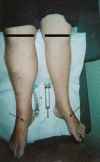
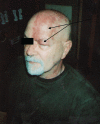


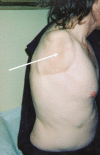

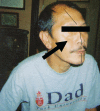
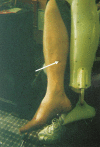


Similar articles
-
Chronic non-cancer pain and the long-term efficacy and safety of opioids: Some blind men and an elephant?Scand J Pain. 2012 Jan 1;3(1):5-13. doi: 10.1016/j.sjpain.2011.11.001. Scand J Pain. 2012. PMID: 29913768
-
The long-term safety and efficacy of opioids: a survey of 84 selected patients with intractable chronic noncancer pain.Pain Res Manag. 2010 Jul-Aug;15(4):213-7. doi: 10.1155/2010/867201. Pain Res Manag. 2010. PMID: 20808965 Free PMC article.
-
Effectiveness of Opioids for Chronic Noncancer Pain: A Two-Year Multicenter, Prospective Cohort Study With Propensity Score Matching.J Pain. 2019 Jun;20(6):706-715. doi: 10.1016/j.jpain.2018.12.007. Epub 2018 Dec 29. J Pain. 2019. PMID: 30597203
-
Opioids and the management of chronic severe pain in the elderly: consensus statement of an International Expert Panel with focus on the six clinically most often used World Health Organization Step III opioids (buprenorphine, fentanyl, hydromorphone, methadone, morphine, oxycodone).Pain Pract. 2008 Jul-Aug;8(4):287-313. doi: 10.1111/j.1533-2500.2008.00204.x. Epub 2008 May 23. Pain Pract. 2008. PMID: 18503626
-
Evidence-based guidelines on the use of opioids in chronic non-cancer pain--a consensus statement by the Pain Association of Singapore Task Force.Ann Acad Med Singap. 2013 Mar;42(3):138-52. Ann Acad Med Singap. 2013. PMID: 23604503
Cited by
-
Differential tolerance to morphine antinociception in assays of pain-stimulated vs. pain-depressed behavior in rats.Eur J Pharmacol. 2015 Feb 5;748:76-82. doi: 10.1016/j.ejphar.2014.12.011. Epub 2014 Dec 18. Eur J Pharmacol. 2015. PMID: 25530266 Free PMC article.
-
Ovariectomy modulation of morphine analgesia of neuropathic pain is associated with the change of K(+)-Cl(-) cotransporter 2 protein level in spinal dorsal horn.Int J Clin Exp Med. 2014 Oct 15;7(10):3467-72. eCollection 2014. Int J Clin Exp Med. 2014. PMID: 25419384 Free PMC article.
-
Effects of repeated morphine on intracranial self-stimulation in male rats in the absence or presence of a noxious pain stimulus.Exp Clin Psychopharmacol. 2015 Oct;23(5):405-14. doi: 10.1037/pha0000042. Epub 2015 Aug 10. Exp Clin Psychopharmacol. 2015. PMID: 26375515 Free PMC article.
-
Home-use servo-ventilation therapy in chronic pain patients with central sleep apnea: initial and 3-month follow-up.Sleep Breath. 2015 Dec;19(4):1285-92. doi: 10.1007/s11325-015-1161-7. Epub 2015 Mar 27. Sleep Breath. 2015. PMID: 25813356 Free PMC article. Clinical Trial.
-
Coexisting addiction and pain in people receiving methadone for addiction.West J Nurs Res. 2014 Apr;36(4):534-51. doi: 10.1177/0193945913495315. Epub 2013 Jul 15. West J Nurs Res. 2014. PMID: 23858068 Free PMC article.
References
-
- Ballantyne J. Opioids around the clock? Pain. 2011;152:1221–2. - PubMed
-
- Dhalla I. The Medical Post. 2011 Oct 4;:75.
-
- Moulin DE, Clark AJ, Speechley M, Morley-Forster PK. Chronic pain in Canada – prevalence, treatment, impact and the role of opioid analgesia. Pain Res Manage. 2002;79:179–84. - PubMed
-
- Sjogren P. Epidemiology of pain and critical issues in opioid use. Pain. 2011;152:1219–20. - PubMed
Publication types
MeSH terms
Substances
LinkOut - more resources
Full Text Sources
Medical

